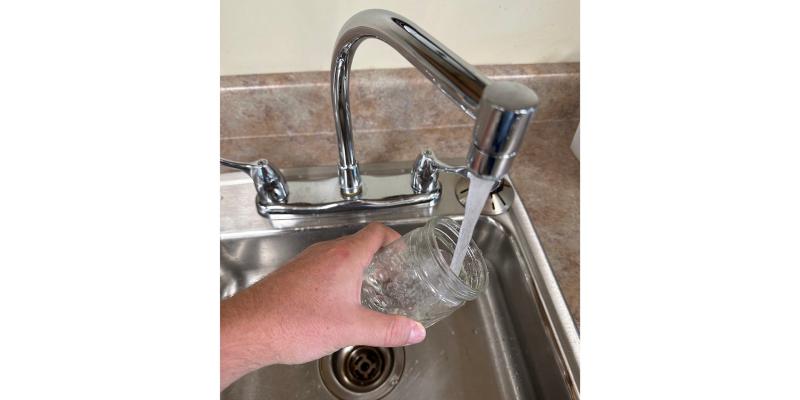MANAGING PRIVATE DRINKING WATER WELLS

The groundwater from aquifers supply most of the household water used in Nebraska. Efficient water use and good management practices are necessary to maintain groundwater quantity and quality. Groundwater is a renewable resource, replenished mostly by precipitation that infiltrates into the soil and moves through the pore spaces down to the water table. However, groundwater resources are not limitless, and groundwater levels can decline when use exceeds recharge. Efficient water use is always important but can be more important during periods of drought when groundwater level decline can be accelerated. To make informed groundwater management decisions, it is important to understand the source of water, the well and its distribution system, and the needs from the well.
Groundwater in Nebraska is stored in the spaces and cracks between the sand, gravel, rock, and other materials in the ground. These materials create the aquifer from which the groundwater is drawn for homes, pastures, and other uses. Nebraska has some large aquifers and a vast supply of excellent-quality water, but not all groundwater is of the highest quality or quantity. The Lewis & Clark Natural Resources District (LCNRD) consists of several aquifers, including Niobrara Bedrock, Missouri River Alluvium, Dakota Sandstone, and a widely distributed sand and gravel aquifer. The water quantity and quality of these aquifers varies widely by location and aquifer system.
The average American uses 60 to 100 gallons of water daily for routine activities. In the summer, water used for lawns and gardens can exceed 900 to 1300 gallons per day. Understanding your household’s water needs and usage is important for water conservation and a consistent water source. Making some minor changes to your routine can positively impact the water used.
When initiating water conservation measures, start with the fixtures and activities that use the most water. The toilet, shower/bath, and clothes washing machine account for two-thirds of the water used in an average household. Leaks account for a great volume of water usage. Completing an in-home water usage inventory will show where the water is being used in the household.
A well should last a long time when properly constructed and in proper working condition. It is important to make sure that your well is protected and well maintained, including the pump inside the well. Water is not always accessible to people with private wells. Indicators that you are experiencing a water outage include sudden loss of pressure, air bubbles coming out of a non-aerated faucet, or heavy siltation in the water. The natural reaction to “running out of water” is to assume that a new well is needed; however, there could be numerous problems that may be causing the outage. The distribution system can also impact the ability of a well to deliver sufficient quantities of water. It is advised to call a well specialist to look into the outage.
When low water levels persist, initiating water conservation measures to reduce total daily demand and peak demand might not eliminate water supply problems. An inspection of the water distribution system might be needed. The water level in a well can drop below the submersible pump or pump intake, causing a loss of water. A more permanent solution might be achieved by deepening the existing well, although this might provide a temporary solution. Work with a professional well-specialist to determine the best solution for your situation.
No matter the situation, contacting a local well specialist to troubleshoot is an excellent start to finding a solution. If you want to learn more about managing private drinking water wells, refer to https://extensionpubs.unl.edu/publication/g2150/private-drinking-water-wells. If you do not know your local well specialist, LCNRD maintains a list of contacts. If you have any questions about groundwater, contact LCNRD at 402-254-6758 or email at lcnrd@hartel.net.
